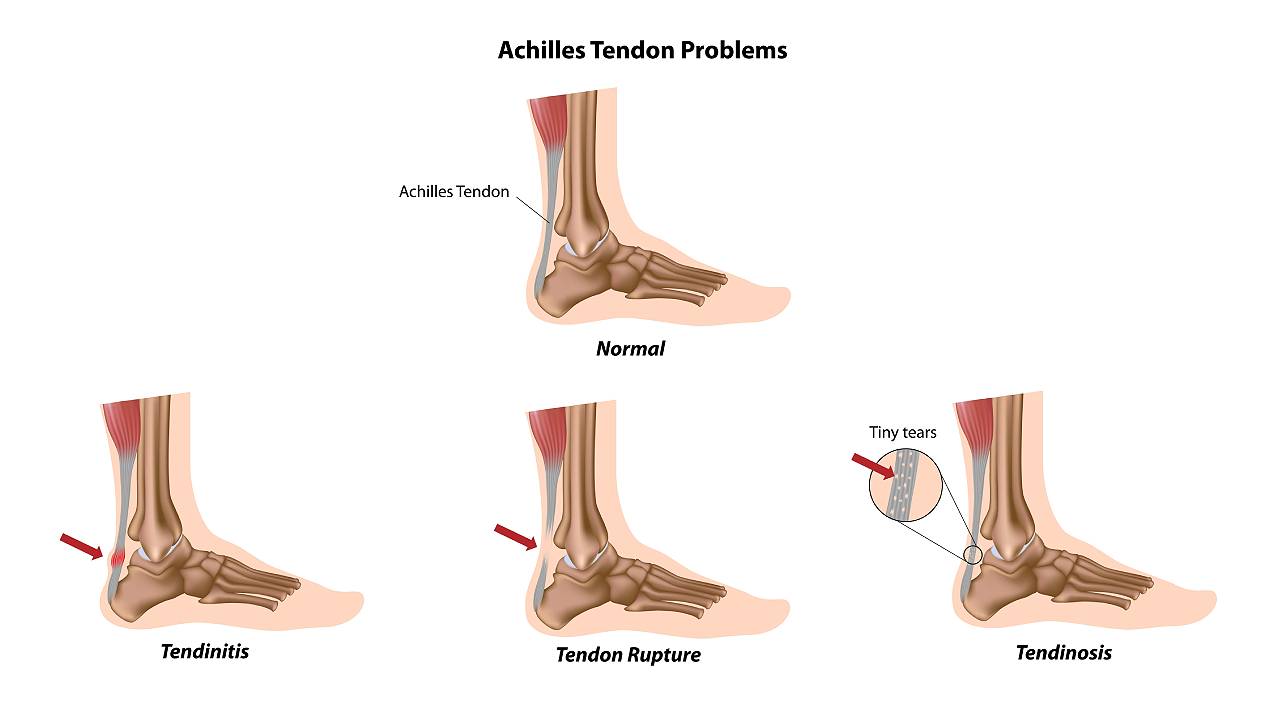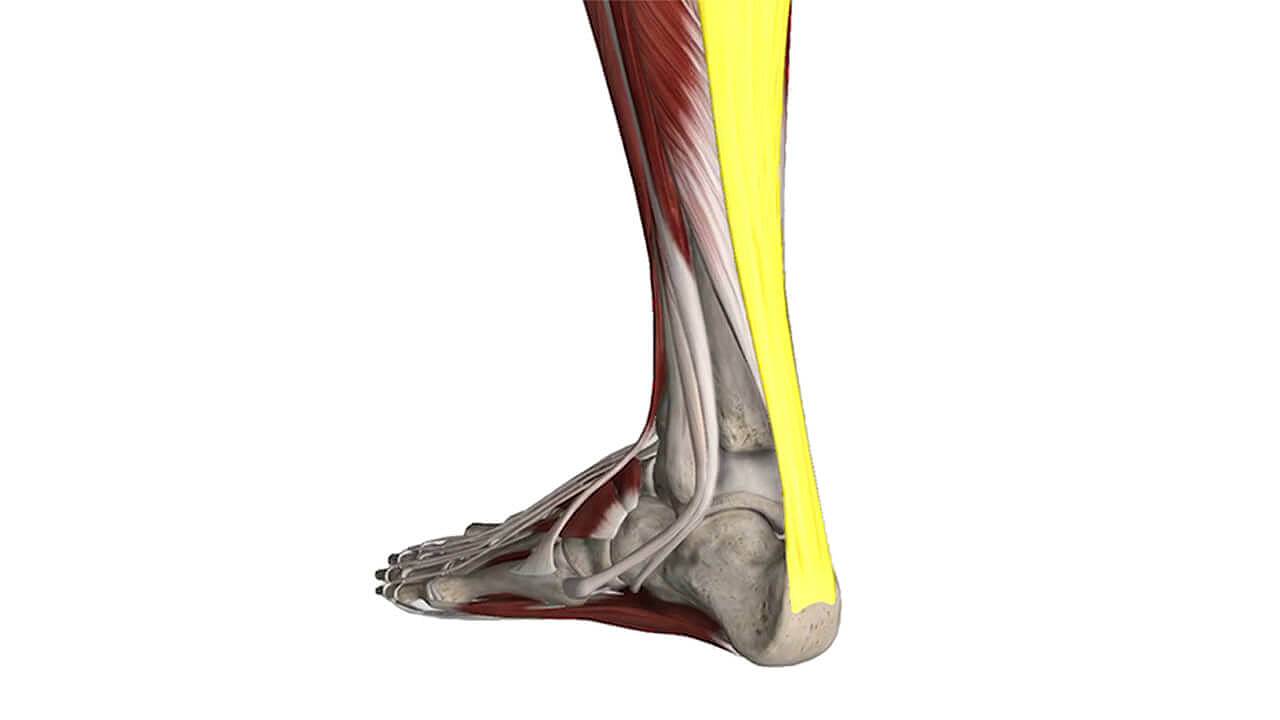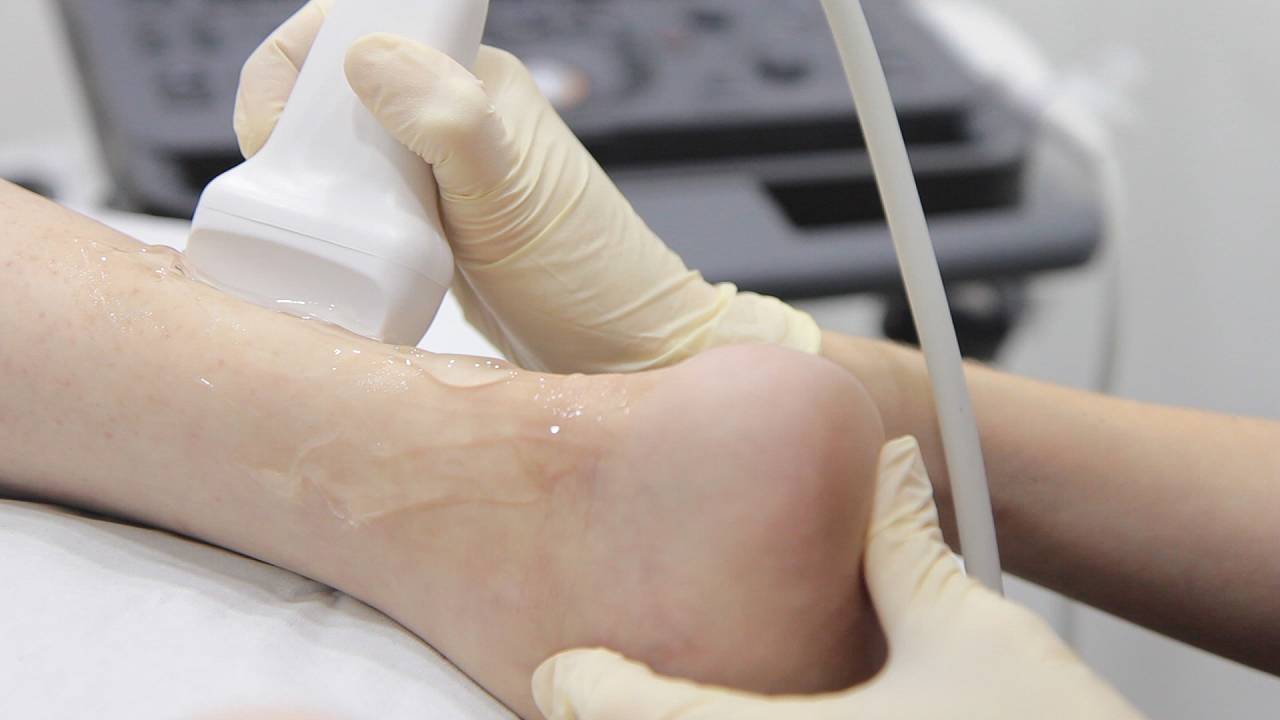Tendons are thick, fibrous cords of connective tissue that connect muscles and bones to facilitate movement. The Achilles tendon, the strongest tendon in the body, is responsible for flexion of the knee and plantarflexion of the ankle joint for actions such as running, climbing, and jumping. Repetitive stress to this tendon can cause it to become inflamed and irritated, resulting in Achilles tendonitis.
Achilles tendinopathy can occur if inflammation and microtrauma to the Achilles tendon does not heal properly, causing further damage to build up over time. The ensuing collagen degeneration and scar tissue formation reduces tendon flexibility, causing it to thicken, along with forming lumps within the region of scar tissue. Calcifications can develop at the insertion point of the Achilles into the calcaneus, and even extend into the tendon in chronic cases of Achilles tendinopathy. Further overuse can cause the tendon to rupture or tear.

Symptoms of Achilles Tendonitis
- Ache or sharp pain anywhere along the back of the tendon and posterior heel
- Limited ankle flexibility
- Redness or heat over the painful area
- Mild to severe aching pain the day after exercising
- Pain and stiffness along the tendon in the morning
- Swelling at the injury site
- Noticeable lump development at the posterior heel
Causes of Achilles Tendonitis
Achilles tendonitis is typically not related to a specific traumatic incident but results from repetitive stress to the tendon. This can be seen when individuals push their bodies too much and/or too soon, but other factors can also contribute to the injury. These factors are:
- Leg length discrepancy
- Overuse
- Increasing the intensity of activity too quickly
- Changing training surfaces too abruptly (soft to hard)
- Inappropriate footwear
- Too tight or fatigued muscles
- Not stretching enough before activity
- Deviated or unstable rearfoot axis

Other factors such as obesity, age, and diabetes can also increase an individual’s risk for developing achilles tendonitis. Individuals who participate in sports, such as Basketball, Running, and Gymnastics also face a higher risk of achilles tendon injuries. This is because the tendon receives a stress load of up to 4 times our body weight while walking, and almost 8 times when running.1 Continuous pressure on the lower limbs must be reduced if signs of achilles tendonitis are showing. To prevent further damage to the tendon, please consult a podiatrist for advice.
Managing Achilles Tendonitis
- Perform R.I.C.E (Rest, Ice, Compression, Elevation) for a new or minor injury – Rest the injury by cutting back on daily activities. Ice the injured site using an ice pack for 15 mins several times a day to reduce the pain. Compression can be performed using an elastic wrap or bandage. Elevate the affected limb to reduce the swelling
- Perform eccentric stretching of the calf muscles daily, after the acute pain and inflammation has abated
- Extracorporeal Magnetotransduction Therapy (EMTT) or Shockwave Therapy (ESWT) can accelerate the body’s healing process, provide pain relief, promote reduction in muscle tension, and stimulate the formation of new blood vessels
- Customised foot orthotics will improve foot alignment and control joint motions during propulsion/ toe-off in the gait cycle and aid in recovery
- Immoboilisation with the use of a walking boot is needed if the injury is severe, or with an ankle foot orthotic if the patient is able to walk with minimal pressure

How Do I Prevent Achilles Tendonitis?
- Choose the appropriate footwear for specific activities
- Perform warm-up and cool-down exercises when participating in sports or exercise
- Regular stretching should be performed to maintain an optimal range of motion and increase flexibility
- Exercise routines with vigorous activities should be altered to avoid overuse injuries
If your condition is recurrent or deteriorating, it is important to take mindful steps to prevent an eventual tendon tear or rupture. Conservative methods, such as physical therapy, can help by accelerating the rate of recovery, optimising sports performance, and pain reduction.
Frequently Asked Questions
Non-invasive interventions, such as shockwave therapy, can help hasten recovery from Achilles tendonitis. Home remedies, such as the R-I-C-E, can help reduce pain, but they will not address the underlying issue.
Walking may worsen your Achilles tendonitis condition. Instead, try stretching or other forms of exercise that minimise putting weight on your feet.
Yes, improper and ill-fitting footwear can cause Achilles tendonitis by providing inadequate support or affecting the biomechanics and function of your tendons. Speak to a podiatrist for professional advice on footwear if you are currently experiencing any pain.
Achilles tendonitis often results in a prominent lump at the back of the heel. This lump can cause friction along the soft material at the back of the shoe, causing it to wear out quickly. When shoes are worn out, they need to be replaced as they no longer offer optimal support.
If left unresolved, it will likely worsen and wind up being a chronic issue. In severe cases, the tendon may rupture, making surgery the only option. Early intervention can help prevent the condition from deteriorating and improve your chances of a full recovery. Do speak to a podiatrist for advice.
It is not advisable to carry on as normal and ignore the pain in your Achilles tendon. Patients frequently only experience pain in the early parts of their run and may think it is possible to run past or through the pain. This will only worsen the injury and cause the situation to develop into a chronic issue. To prevent this, do seek early intervention from a local podiatrist.




